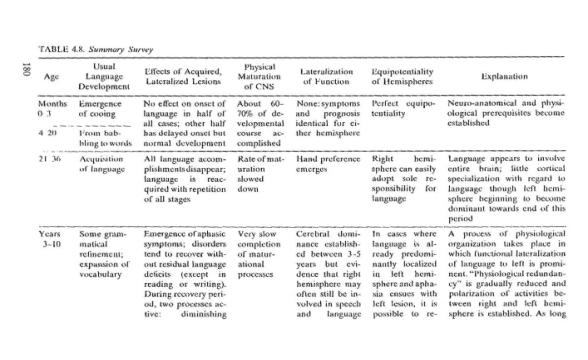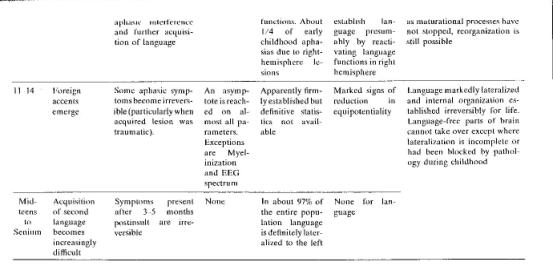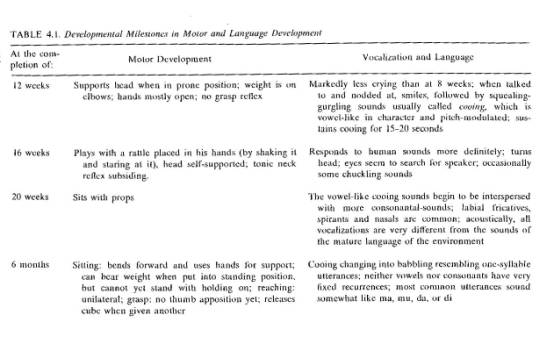
Chapter 4 Language in the
context of growth and maturation
I. Characteristics of maturation of behavior
The hallmarks of maturationally controlled emergence of behavior are the following:
1. regularity in the sequence of appearance of given milestones, all correlated with age.
2. environmental stimulation being constant, the infant uses these opportunities differently as they grow up.
3. emergence of the behavior before it is of use to the individual.
4. clumsy beginnings are not goal-directed practice.
The four characteristics can be employed as touchstones in discussing whether the onset of language may be attributed to a maturational process.
II. Emergence of Speech and Language
1. the Regularity of Onset
The onset of language is not simply the consequence of motor control.

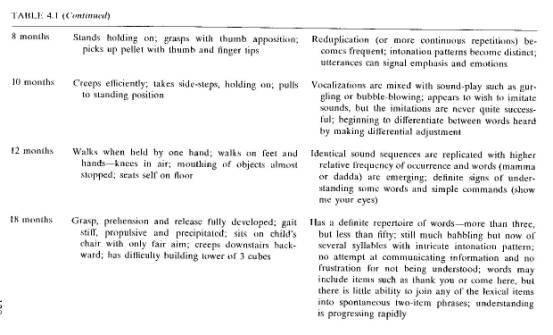
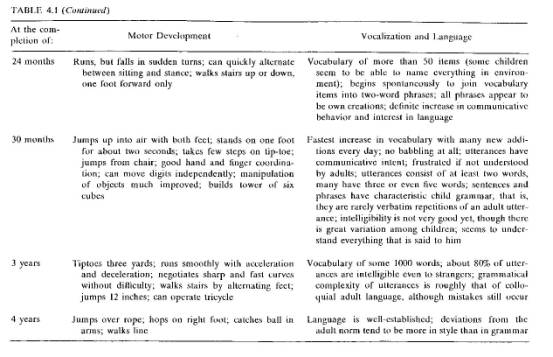
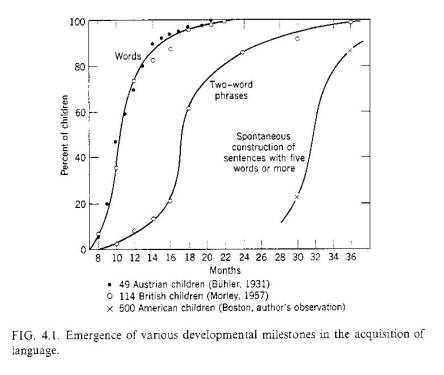
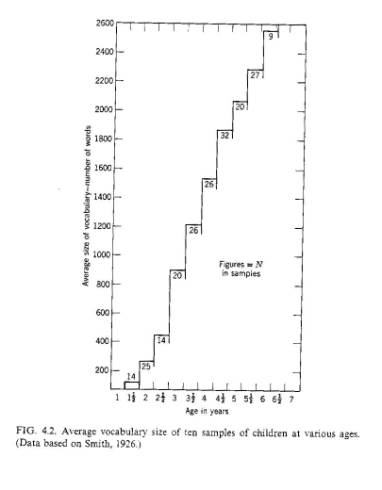
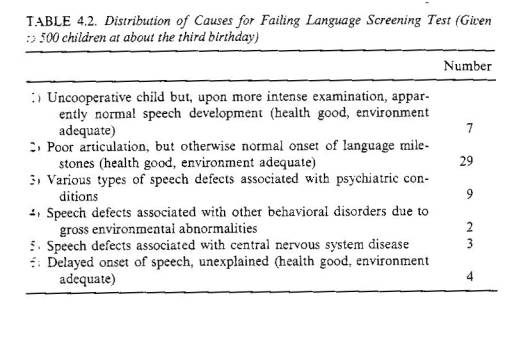
2. Environment and the Age of Onset
Two major problems: 1. How are the infant¡¦s language acquisition affected by environmental variations during his prelanguage life; 2. What influence does the environment have upon the age at which language capacities appear?
Social environmental factors are hard to distinguish.
Experiments:
Deaf parents and infant speech development
Anthropological field work in primitive cultures
-the coordination between speech and motor development observed in western culture were also found in children in non-western cultures.
The term ¡§Primitive language¡¨ is misleading for that no language is inherently simpler than any other language.
The emergence of language is more easily accounted for by assuming maturational changes in the growing child than any special training in his surroundings.
3. The Role of Utility in the Onset of Speech
A healthy deaf child gets along with his family.
Language isn¡¦t acquired because of the need to communicate.
Language is not a hard labor, normally attained in two years after beginning.
4. The Importance of Practice for the Onset of Speech
Cooing and babbling don¡¦t represent practice stages for future verbal behavior.
Practice isn¡¦t the main factor of language acquisition.
5. ¡§Wolf Child¡¨
The wolf child cases are not well-documented.
Life in those ignored situations is not good to health and normal development.
III. Age Limitations to Language Acquisition
The primary acquisition of language predicated upon a certain developmental stage which is quickly outgrown at the age of puberty.
1. Age and Recovery from Traumatic Aphasia
Aphasias that have not had time to clear up completely before puberty commonly would leave some trace behind which the patients cannot overcome.
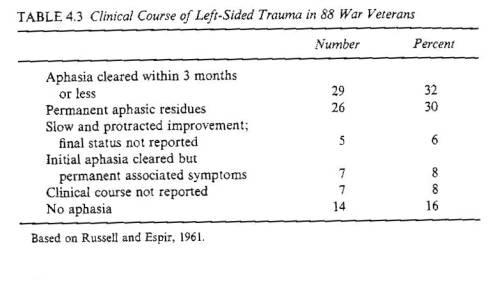
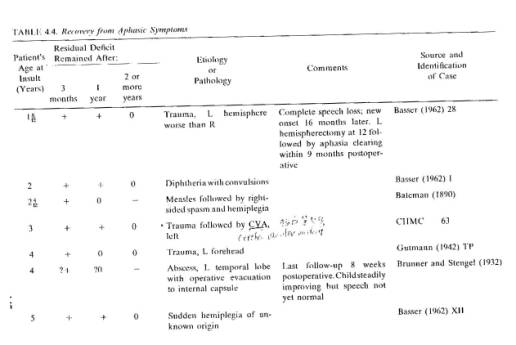
ChIV-2
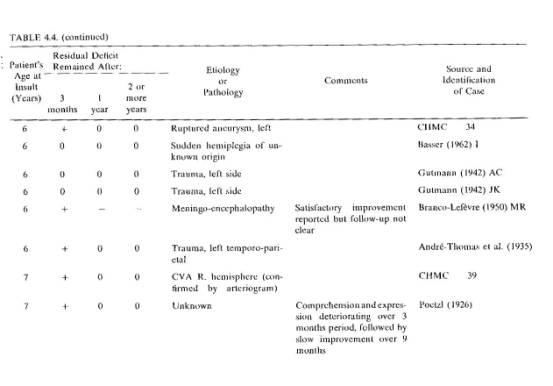
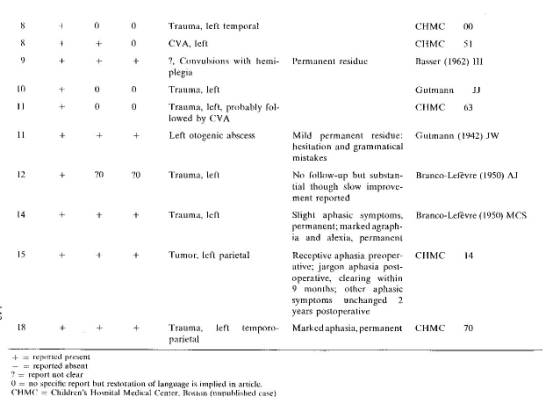
2. Age of Lateralization of Speech Function in the Brain

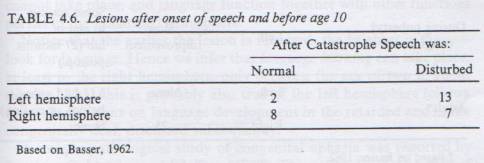
3. Hemispherectomy
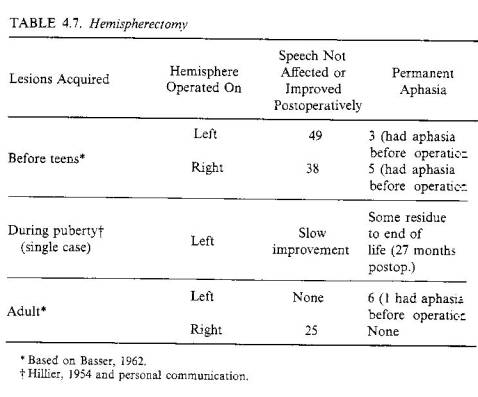
Preliminary Summary: Aphasia is the result of direct neuro-physiological process of language. The younger the lesion takes place, the bigger the chance that the children may develop well.
4. Arrest of language Development in the Retarded
5. The effect of Sudden Deafness on Language at Various Ages
The prognosis for speech habilitation in the deaf improves directly with the advance of age at onset of his disorder.
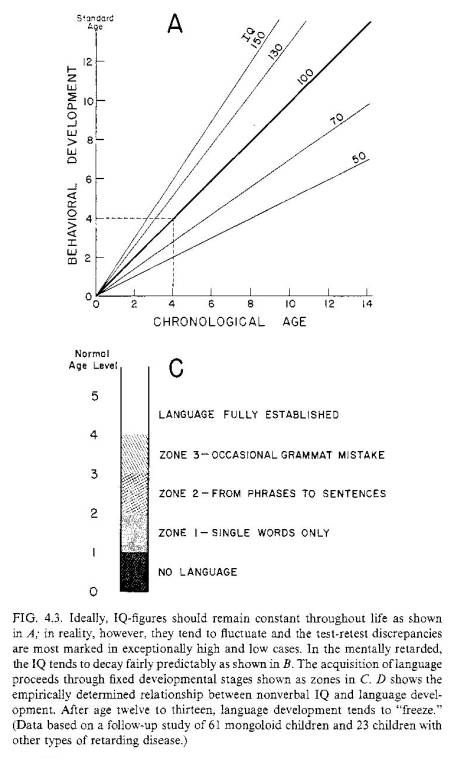
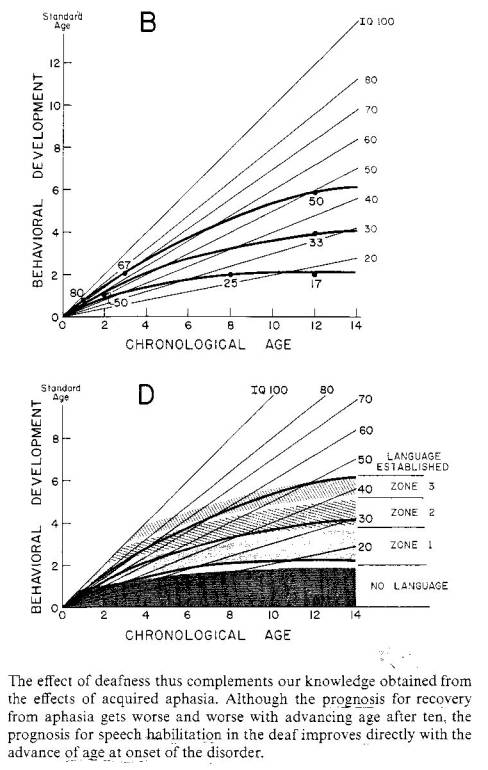
IV. Concomitants of Physical Maturation
Language cannot begin to develop until a certain level of physical maturation and growth has been attained.
Fig. 4.4, 4.5, 4.6
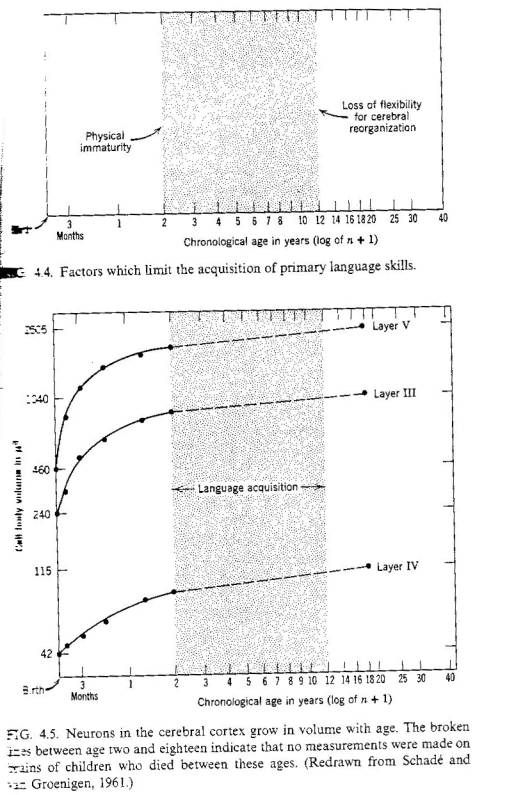
ChIV-3
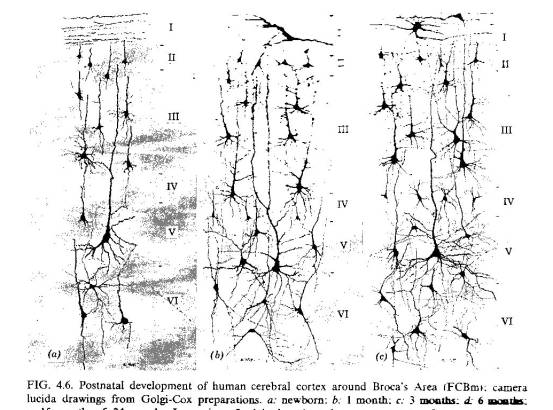
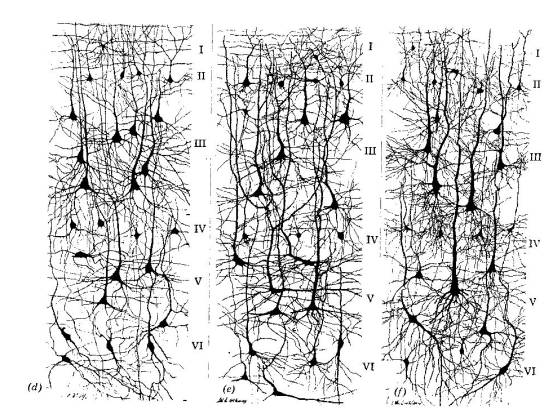
1. Structural Changes in the Brain
Fig. 4.7
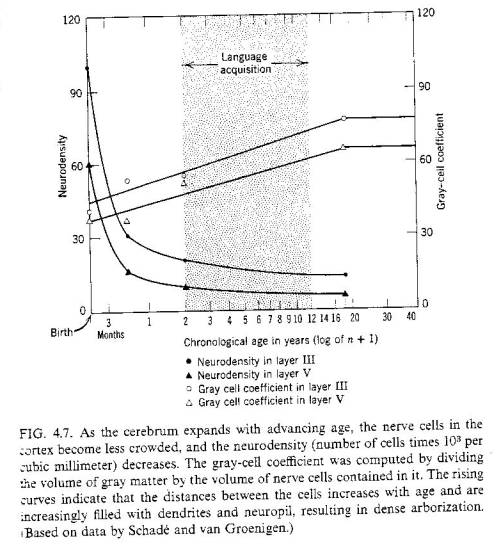
2. Changes in Chemical Composition of the Brain
Fig.4.8, 4.9
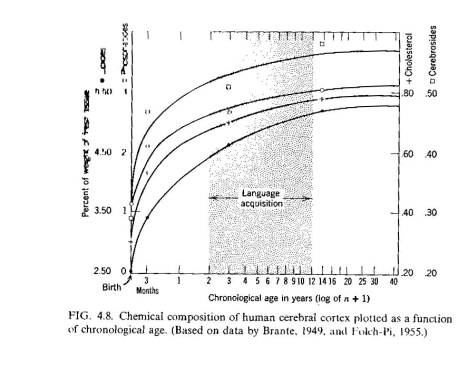
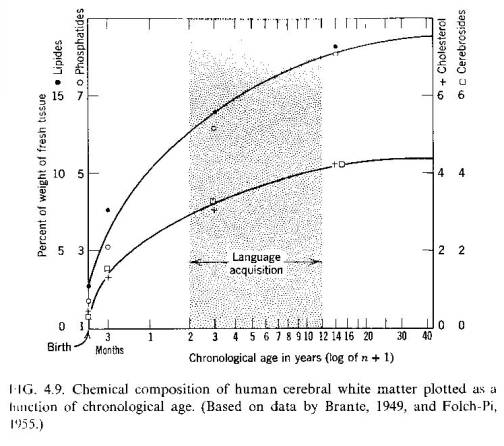
3. Electro-Physiological Changes
Fig. 4.10, 4.11, 4.12
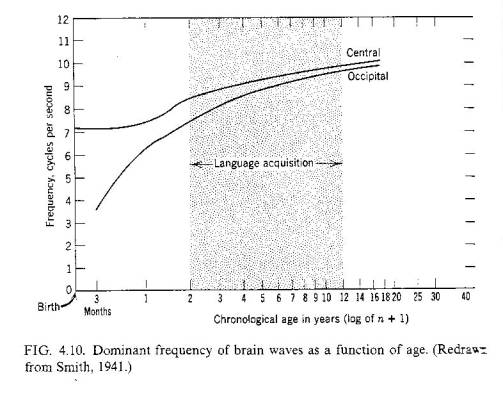
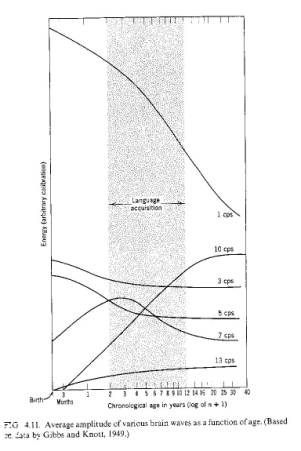
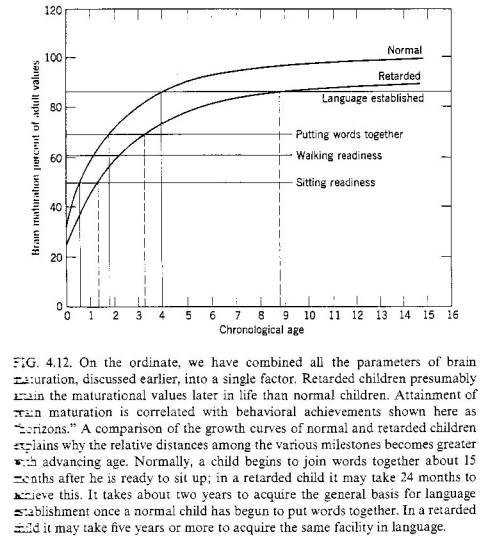
V. Growth Characteristics of the Human Brain and Their Possible Relationships to Language Acquisition
Fig. 4.13-15
ChIV-4
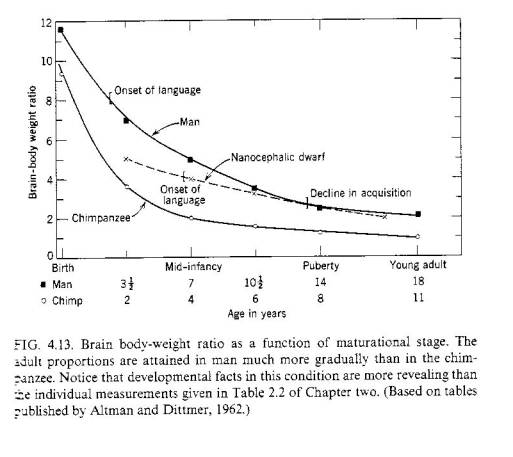
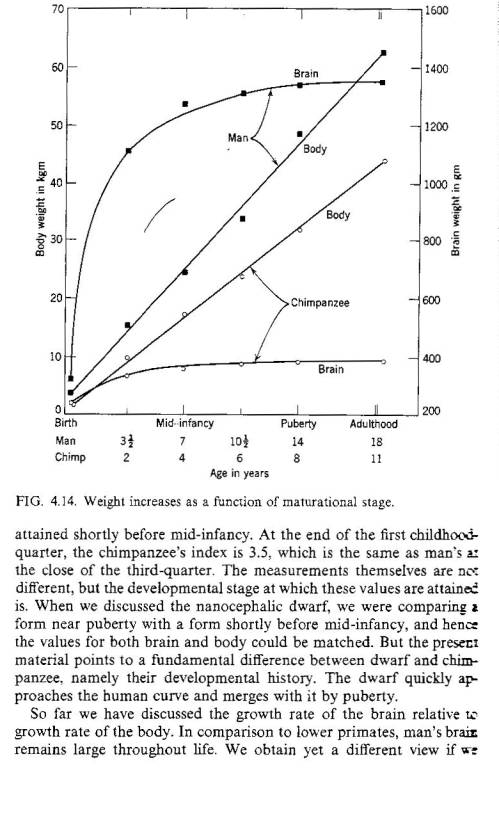
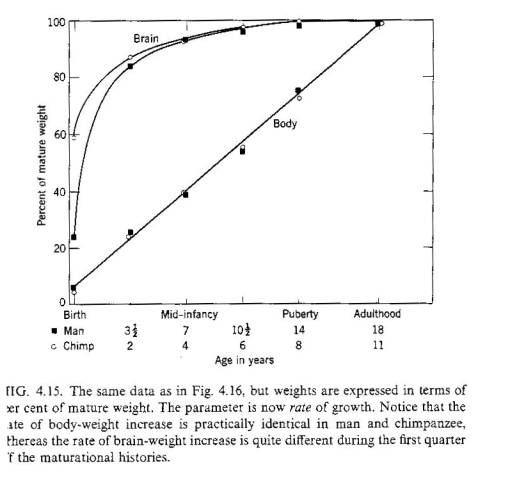
Only man has hemispheric dominance with lateralization of function and marked preference with respect to side in the use of limbs and sensory organs. The development of language is a species-specific phenomenon, related to cerebral dominance and maturational history.
VI. Further Comments on the ¡§Critical Period¡¨ for Language Acquisition
Animal behavior with critical period (such as Imprinting) is not an indication to phylogenetic relationship btw man and other species.
Time limitation of language acquisition does not function across the board for all types of human learning.
Hand preference isn¡¦t an unfailing guide to knowledge about cerebral dominance.
Fig. 4.16
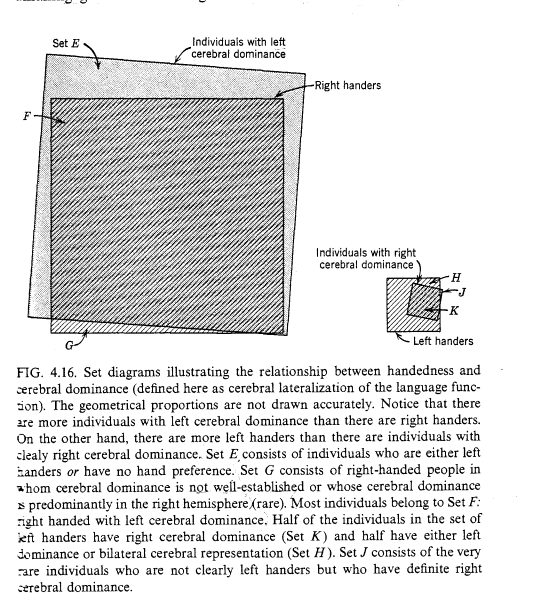
Table 4.8 Summery
